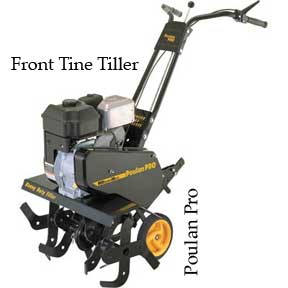Question: What is the best way to apply fertilizer and just “how much” fertilizer should I apply? Donna, Dallas, Texas
Answer: Donna, before we look at “when to apply fertilizer” and “the best way to apply”, we need to look at – “How Much?” Also, in your question, you did not let me know if you were applying to the lawn, fertilizing roses, trees or container plants, so we will have to provide more of an overview.

How Much Fertilizer Do You Use?
I know you’re asking… “How much fertilizer do I need?”.
The amount of fertilizer to apply depends to a large extent upon:
- Its concentration
- The soil
- The crop you intend to grow
- Weather conditions.

Only a soil test, whether made by you or your state experiment station or independent lab, can answer the first question accurately.
Although if you have a lush crop of weeds, you can be sure that your soil is pretty good and should be able to grow a flourishing crop of vegetables, fruits, or ornamental plants.
Some plants, such as asparagus and rhubarb, are heavy feeders, especially of nitrogen phosphorus and potassium fertilizers.
Others, such as peas and beans, may even add nitrogen to the soil.
Weather also plays an important part, because organic fertilizers especially are less available to plants during unseasonably cold periods but organic fertilizer is better suited during spring applications.
But, at the same time, the plants grow more slowly under such conditions, hence their need for plant foods is reduced.
Recommendations for ordinary powered garden fertilizers, such as 5-8-7, generally range from 3 to 5 pounds per 1000 square feet.
In the case of highly concentrated fertilizers, whether liquid or dry, the required amounts vary so much from brand to brand that the only safe thing to do is to follow the manufacturer’s directions.
Related: How And What to Feed Garden Plants
How To Apply Fertilizer
When fertilizing lawns a hand-held, push or motorized fertilize spreaders is used to “throw” the fertilizer evenly, then the fertilizer is watered in to help move it into the soil.
The most common way to apply fertilizer has been to scatter it over the soil and then turn it in by plowing, rotary tilling, or spading in a garden for example.
However, some believe it to be the most wasteful, especially in sandy soils where it can easily be washed down out of reach of the plants.
Unless the soil is well mixed, it is often just dumped to the bottom by the plowing or spading and the young plants must do without it in their early stages.
A better method is to scatter the proper amount over the soil after it is turned over and just before a thorough raking. This gets it well mixed in the upper few inches and allows it to work its way down.

More economical for small flowers or vegetables whose roots are not far-ranging is to mix the fertilizer thoroughly into the soil directly under the row or hole for the plant.
Then after the plants are well established and need a little additional food they may be side-dressed by placing the fertilizer in a furrow on either side of the row or in rings around individual plants.
Up until now we have been discussing the application of dry or powdered fertilizers. With side dressings we can also apply fertilizer in liquid form for a quick pickup.
For this, use only those designated as completely soluble. Other forms have too much waste.
A variation of this is root feeding, where a liquid or powdered fertilizer is placed in a mixer and automatically dissolved and fed into the water passing through a hose.
The enriched solution is then fed to roots of trees, shrubs, roses, etc. through a hollow spike-like applicator that is pressed down into the soil to the proper depth.
Another effective form is the use of “fertilizer spikes” in which fertilizer manufactured into a tablet or spike and is placed in the soil and slowly dissolved by moisture and watering as it comes in contact with the spike.

Foliar Fertilizer Feeding Through The Leaf
Lastly, we have foliar, or through-the-leaf, feeding. Only completely soluble materials may be used and care must be taken to follow the manufacturer’s directions explicitly.
Once the correct amount has been calculated for the apparatus at hand, the liquid fertilizer concentrate may be applied with a conventional sprayer or a hose sprayer, either at the time of spraying or separately.
How Does Fertilizer Effect Earthworms?
There have been claims that chemical fertilizers kill earthworms. However, within reasonable limits, the heavier the application the greater the growth of crop and crop residues; hence the larger the population of worms because of this increased food supply.
Also, earthworms are no more sensitive to fertilizers than are root hairs. But, if temporarily disturbed by an overdose, the worms simply move down deeper or out of the fertilizer’s range.
Before applying fertilizer to the garden, landscape or lawn, always read and follow the manufacturers’ directions to know how much fertilizer per plant to use.